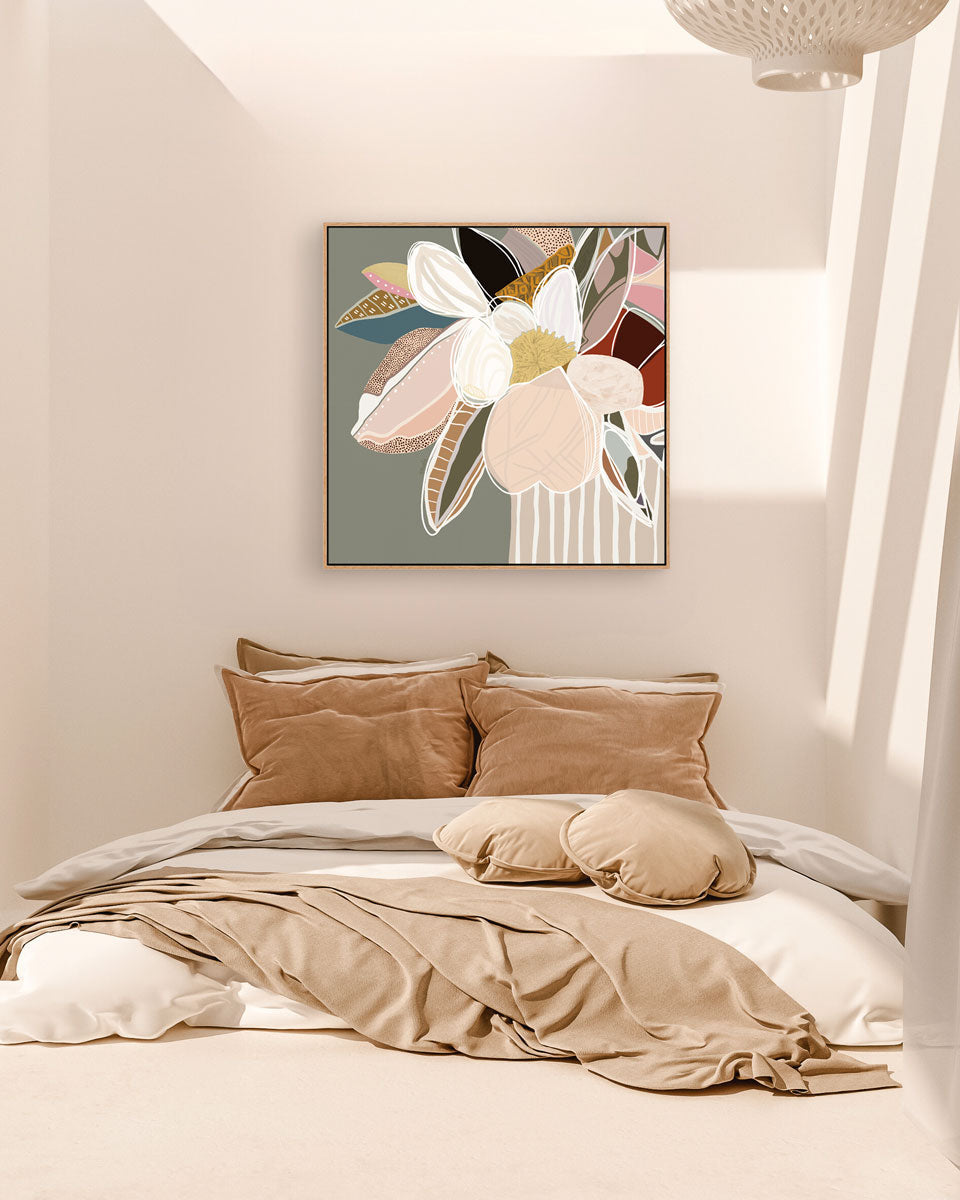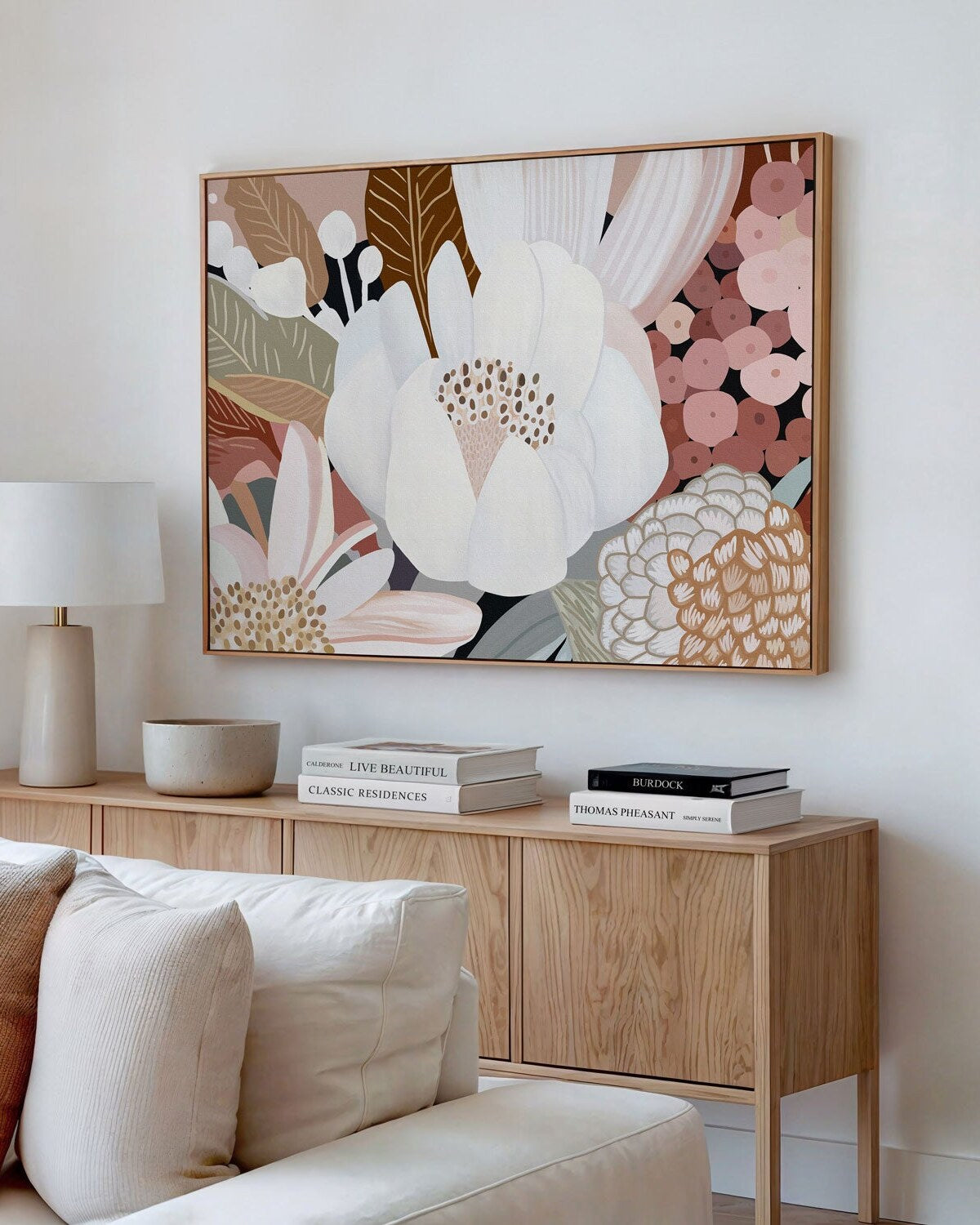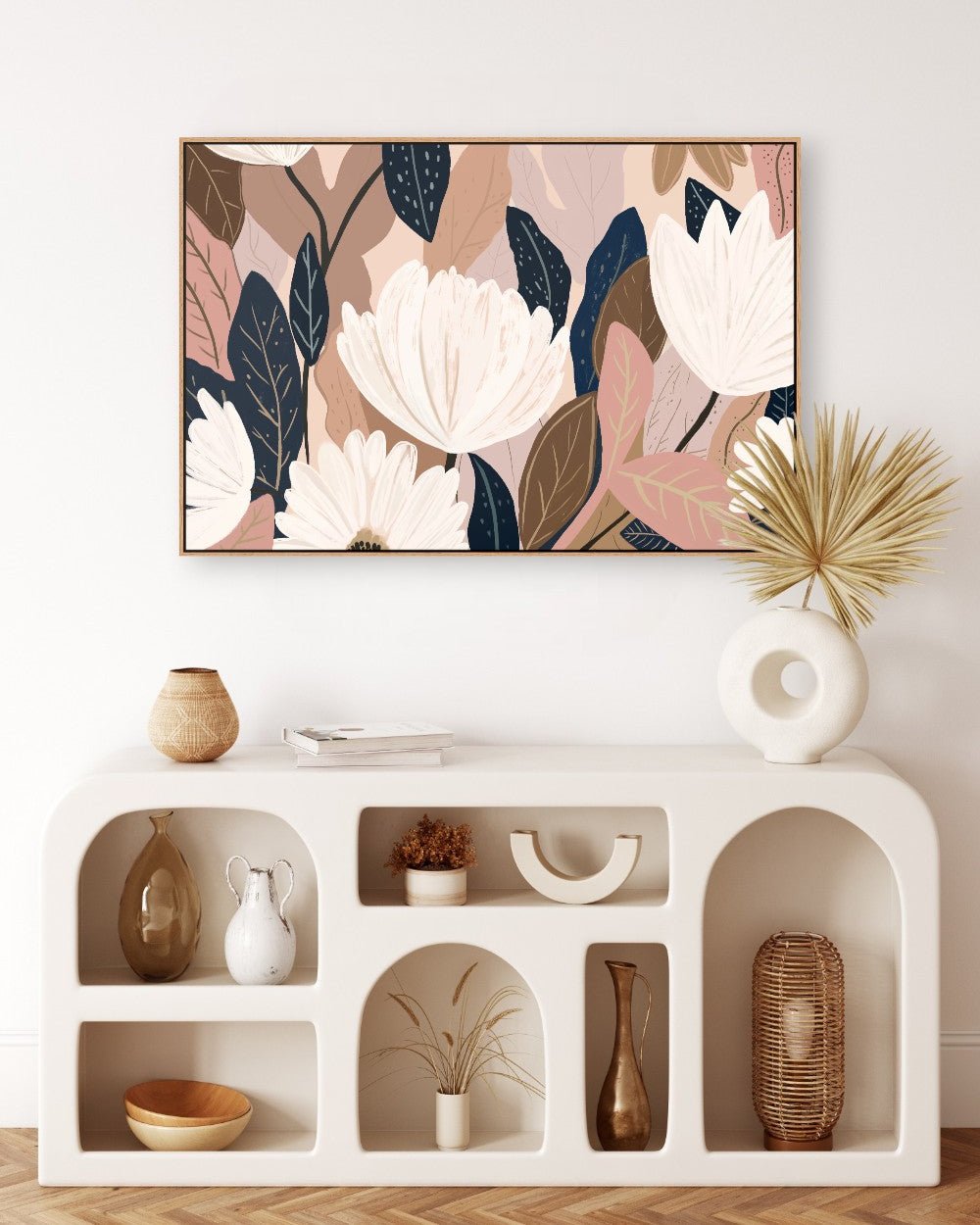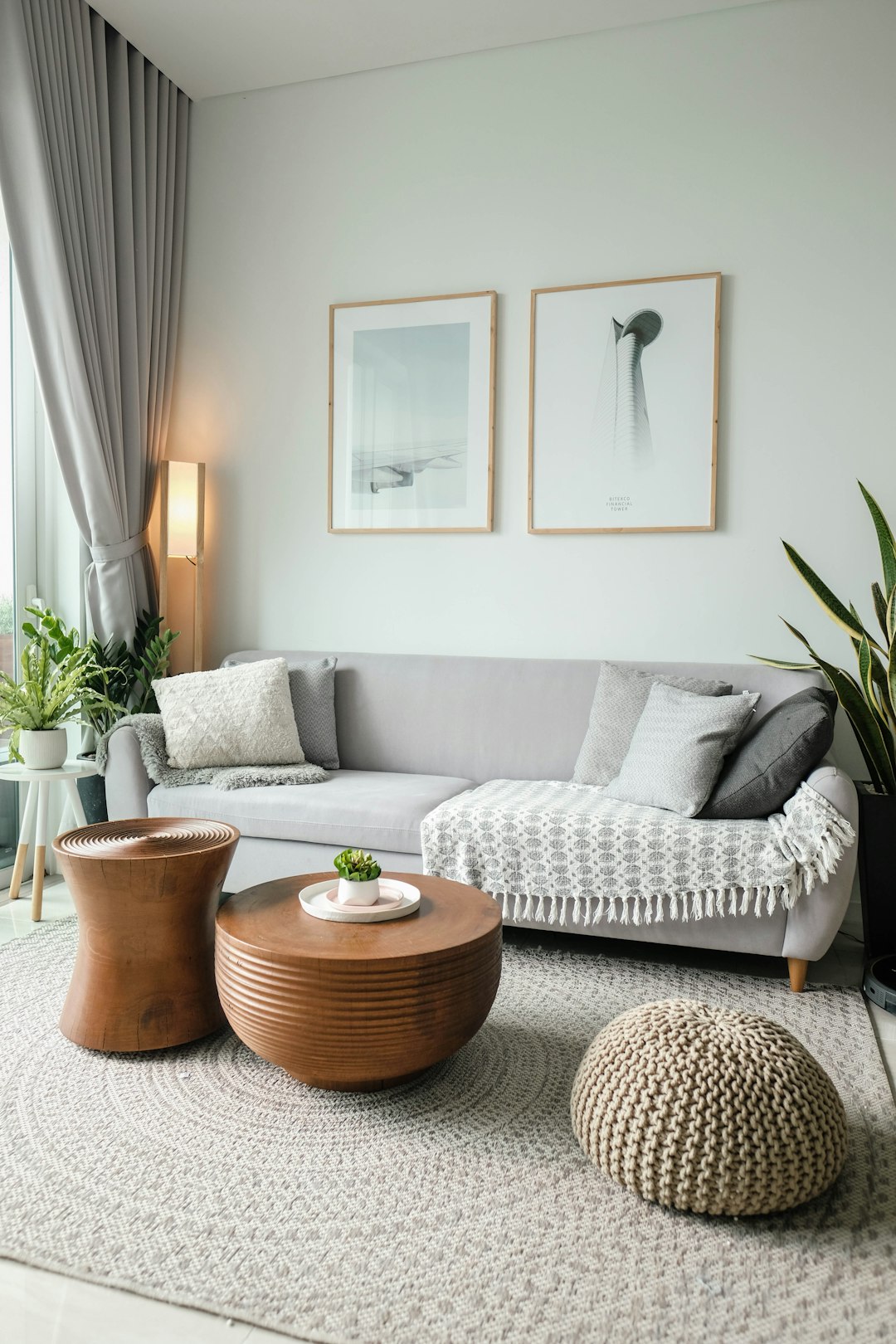Are you a renter looking to decorate your rental home with art and pictures? This guide is a must-read for you! We'll cover renter-friendly ways to hang artwork without nails, tips for hanging art, and creative ways to decorate the walls of your rental property. Read on to discover how you can personalise your space and bring a home to life with artwork, without damaging the walls or breaking any rules.
Article Outline
- Why is Hanging Pictures in a Rental So Tricky?
- What Do Landlords Usually Allow?
- How to Hang Pictures Without Making a Hole in the Wall?
- What Types of Hooks to Use for Different Sizes of Frames?
- How to Decorate the Walls with Pictures and Art?
- Is Washi Tape a Good Picture-Hanging Solution?
- What Are Some Creative Ways to Display Your Pictures?
- How to Hang Multiple Artworks Without Damaging the Wall?
- What to Do When It's Time to Move?
- Expert Tips for Hanging Art in a home that you rent

Why is Hanging Pictures in a Rental So Tricky?
Hanging artwork prints in a rental property can be a bit of a challenge. Most rental properties have strict rules about making alterations, including putting holes in your apartment wall. This is where renter-friendly hanging solutions come into play. They allow you to hang pictures that help you to feel at home, so long as you are careful not to damage the walls, ensuring you don't lose your security deposit. There are several reasons why hanging artwork in a rental can be tricky:
1. Lease agreements: Many rental properties have lease agreements that explicitly state that tenants cannot make any alterations to the property. This may include hanging your wall art with a hammer and nail in the wall.
2. Damage to walls: Property owners are often concerned about potential damage to the walls caused by nails or screws used to hang pictures. They do not want to deal with the hassle and expense of repairing walls after a tenant moves out.
3. Security deposits: Landlords typically require tenants to pay a security deposit before moving in. This deposit acts as insurance for any damages or repairs that may need to be made when the tenant moves out. If a tenant leaves behind holes or damage from hanging pictures, the owner may deduct money from the security deposit to cover the repairs.
Photo by Minh Pham on Unsplash
What Do Landlords Usually Allow?
Before you start hammering away, it's crucial to consult the owner or property manager. Some landlords are more lenient and may allow small holes, while others might have strict policies. Always read your lease agreement carefully to know what's allowed. Property owner's usually allow tenants to make minor changes to their living space, such as painting the walls in neutral colours, hanging curtains or blinds, and installing removable adhesive strips for hanging lightweight items.
Some landlords may also allow tenants to install additional shelving or storage units, as long as they are easily removable and do not cause damage to the property. However, major alterations, such as removing walls, installing new fixtures or appliances, or making structural changes, usually require the owner's approval and may involve additional costs or the need to restore the property to its original state before moving out. It is important for tenants to communicate with the owner and obtain permission before making any changes to ensure compliance with the lease agreement and avoid any potential disputes.
Photo by Minh Pham on Unsplash
How to Hang Pictures Without Making a Hole in the Wall?
One of the best ways to hang your artwork prints without nails is to use adhesive command strips. These stick to the wall without leaving any residue and can hold different sizes of picture frames. They are an excellent hanging solution for renters who want to avoid making a hole.
To hang art around your house without putting a dent into the wall using adhesive follow these steps:
1. Clean the wall: Before applying any adhesive, clean the area on the wall where you want to hang the picture. Wipe away dust or dirt using a mild cleaning solution and a clean cloth. Allow the area to dry completely before proceeding.
2. Choose the right adhesive: Look for hooks or strips that can hold the weight of your picture frame. Most packages will indicate weight limits. Consider using multiple strips for larger or heavier frames.
3. Position the strips: Hold your picture up against the wall and determine the desired height and position. Use a level to ensure the picture is straight. Mark the top corners or edges of the frame lightly with a pencil.
4. Apply the adhesive hooks: Remove the backing from the adhesive strip and carefully position it on the wall according to the marked spots. Press firmly on the hook or strip for about 30 seconds to ensure it adheres well to the wall.
5. Wait for the adhesive to set: After applying the strips, wait for the recommended amount of time indicated on the package before hanging the picture. This waiting period allows the adhesive to fully set and bond with the wall.
6. Hang the picture: Once the adhesive has set, carefully hang your picture on the hooks or strips. Make sure the frame is securely in place by giving it a gentle tug.
7. Adjust if necessary: If the picture is not level, gently remove it from the hooks or strips and reposition it. Be careful not to pull or twist the hooks or strips too forcefully, as this can damage the wall.
What Types of Hooks to Use for Different Sizes of Frames?
When it comes to hooks, you have several options. For lightweight frames, adhesive will do the trick. For heavier frames, you might need to use picture hangers that can hold more weight. Always check the packaging to see how much weight the hooks can hold. For medium-sized frames, you can use small nails or screw-in hooks, depending on the wall material and weight of the frame. Make sure to choose hooks that can support the weight of the frame and secure the frame adequately.
For larger frames, it is best to use heavy-duty hooks, such as wall anchors or sturdy wall hooks, to ensure the frame is securely mounted on the wall. These are designed to hold heavier objects and provide better stability and support.
It is important to consider the size, weight, and material of the frame when selecting the appropriate hooks. Additionally, consider the type of wall you are hanging the frame on (e.g., drywall, concrete) as different hooks may be required for different wall materials. Always follow the manufacturer's instructions and guidelines when using hooks to hang frames to ensure safety and proper installation.
Photo by Sidekix Media on Unsplash
How to Decorate the Walls with Pictures and Art?
Decorating the walls of your leased apartment can bring a lot of personality into your space. You can create a feature wall with multiple framed pictures or use art pieces to create a focal point in the room. The key is to use renter-friendly methods like adhesive or picture hanging strips to hang your art to keep your apartment walls free of damage.
Is Washi Tape a Good Picture-Hanging Solution?
Yes, washi tape is not just for crafting; it's also a trendy way to hang lightweight art and pictures. You'd be surprised to learn that the tape is strong enough to hold the weight of paper or small canvas pieces and can be easily removed without pulling off the paint. However, it is important to note that any type of tape is not suitable for hanging heavy or valuable artwork. It is best used for small, lightweight pieces and is ideal for temporary or decorative displays.
Photo by Kelly Sikkema on Unsplash
What Are Some Creative Ways to Display Your Pictures?
If you're looking for creative ideas to display your pictures, consider using a wire or string art display. Stretch a piece of wire or string across a wall and use small clips to hang your photos. This method is particularly useful for hanging pictures of people and their loved ones.
Photo by Jason Briscoe on Unsplash
How to Hang Multiple Artworks Without Damaging the Wall?
If you want to hang multiple pictures, consider using a hanging system. These systems allow you to hang several frames without making multiple holes in the wall. They are a great idea to display an art gallery in your house without having to nail a row of holes into the walls.
What to Do When It's Time to Move?
When it's time to leave, make sure to carefully remove all hooks and strips without damaging walls. If you've made any holes, you'll need to fill them in and paint over them to restore the property to its original state.
Expert Tips for Hanging Art in a Home that you Rent
- Use picture rail hooks if your apartment has a picture rail.
- Try to position the frames away from direct sunlight to avoid fading and damage.
- Always consult your landlord or property manager before making any changes.
Key Takeaways
- Always consult the owner before hanging anything on the walls.
- Use renter-friendly hooks and hanging strips to hang pictures without nails.
- Get creative with displaying your art, like using wire or string.
- Washi tape is a trendy and damage-free way to hang lightweight art.
- When it's time to leave, restore the property to avoid any additional expenses for little things like chipped walls or peeled off paint.
I hope this comprehensive guide helps you decorate your home in a way that makes it feel like your own, all while keeping your landlord happy and your security deposit safe.
















Leave a comment